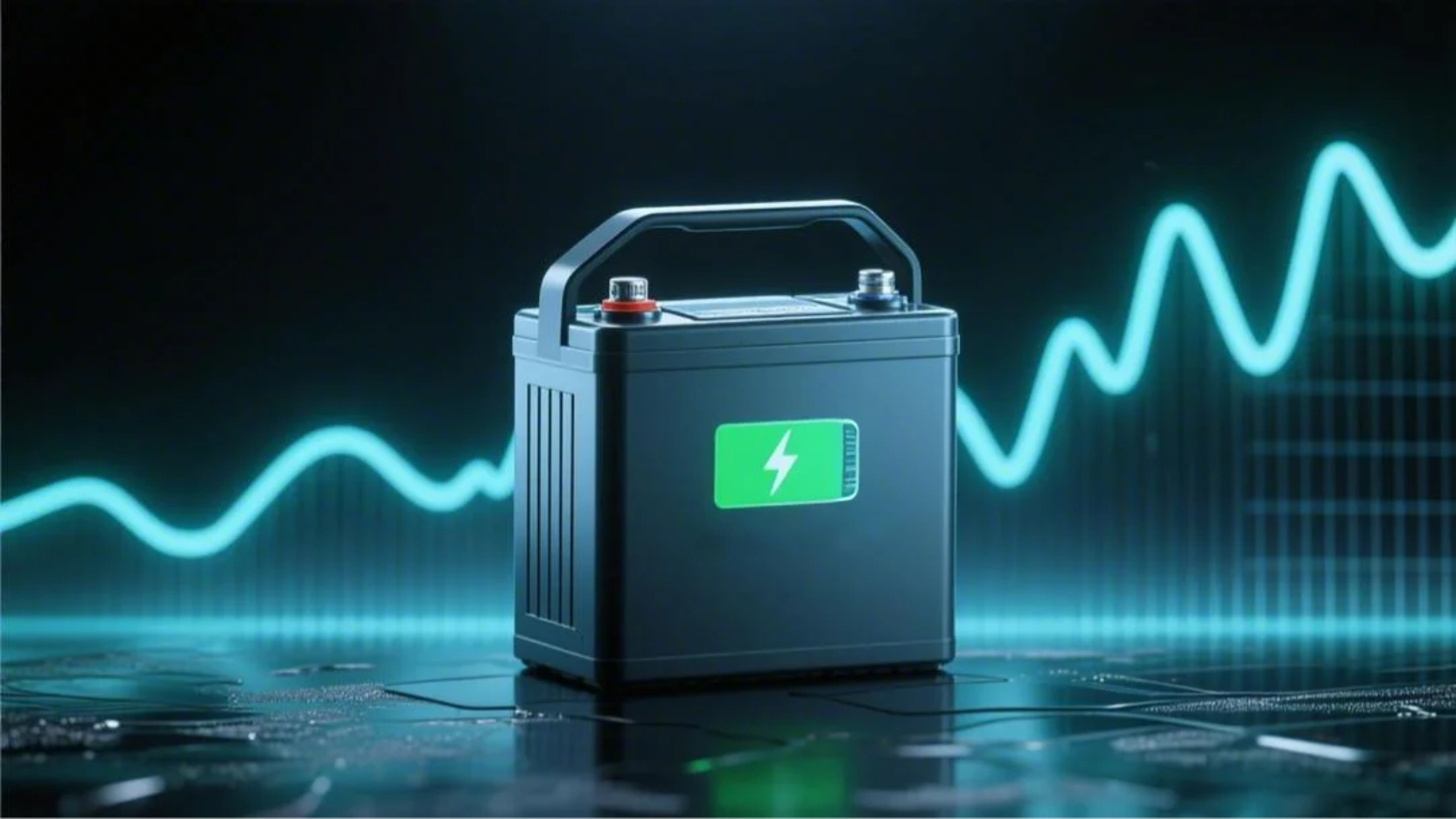 Whatsapp chat
Whatsapp chathexup.service@gmail.com

HEXUP Extends Shared Battery Lifespan in Swap Cabinets by 2 Years
Is Your Battery Life Shortening with Daily Swaps? Struggling with Inefficiency and High Maintenance Costs? Meet HEXUP’s Smart Charging Technology—Your Battery’s Guardian.Zero-Voltage Activation: Gentle Awakening for Extended Battery LifeTraditional battery swap stations charge batteries with high current immediately upon connection, which can be harsh on cells. HEXUP’s smart swap cabinets use Zero-Voltage Activation technology, gently "waking up" dormant batteries. During the initial charging phase, the system applies a low current to avoid sudden high-current surges, minimizing damage to internal active materials and extending battery lifespan.Adaptive Charging: Smart Speed Control for Efficiency & SafetyHEXUP’s smart cabinets act like an "intelligent brain," automatically adjusting charging speeds based on real-time battery levels:Fast Charging Mode activates when the battery is low, rapidly replenishing power with high current.Slow Charging Mode switches on as the battery nears full capacity, using a gentle trickle charge to prevent overcharging.This adaptive strategy ensures both efficiency and battery health, striking the perfect balance between speed and safety.Comprehensive Battery Protection for LongevityCombining Zero-Voltage Activation and Adaptive Charging, HEXUP’s technology offers 360° protection for batteries. By reducing charging stress and slowing aging, batteries last 1-2 years longer, cutting replacement costs and e-waste for a greener future.Boost Operational Efficiency, Slash Maintenance CostsHEXUP’s smart cabinets minimize manual intervention with:Automated health monitoring and preemptive fault alerts.Reduced battery replacement frequency thanks to extended lifespan.These features streamline operations, lower maintenance costs, and maximize ROI for businesses.Choose HEXUP: Smarter, Safer, SustainableWith cutting-edge charging technology, HEXUP’s smart swap cabinets deliver efficiency, safety, and eco-friendliness in one solution. Protect your batteries, optimize costs, and join the future of energy management.HEXUP Intelligent Swap Cabinets—Powering Progress, Preserving Resources.
check the details
Why Battery Swap Projects Take So Long and How HEXUP Solves It
"Why do most battery swap projects take 8-12 months or even longer to be implemented?"In the global wave of electrification, we've noticed an industry paradox: the demand side continues to surge, but the supply side is trapped in the "fragmentation trap"—operators need to connect with 12+ different suppliers, handle 30+ technical agreements, and undergo over 200 hours of system debugging. This not only consumes a lot of funds but also causes market opportunities to slip away during repeated connections.HEXUP has restructured the logic of electrification transformation using 10 years of 3000+ scene data—not by "patching together technologies," but by "replicating proven success."This is the very reason we launched the Global One-Stop battery Swap Solution.We’ve integrated full-chain capabilities into plug-and-play standardized modules:✓ Smart battery swap cabinet clusters (adaptable to extreme climates from -20°C to 55°C)✓ 6 exclusive vehicle models for different scenes (logistics/taxis/community/mining, etc.)✓ Independent deployment of SaaS management systems (customizable)✓ Smart battery packs (no debugging required)Just like "building with Lego," you can select application scenarios and operational scales (500-100,000+ terminals), and complete the solution design in 45 days.The hidden value we create for our partners:Cost Reconstruction: Standardized interfaces reduce 78% of secondary development costs.Risk Isolation: Full-link quality assurance + localized spare parts centers.Profit Acceleration: Quick-fission solutions + strategies to use electricity during off-peak hours when grid prices are low.Continuous Evolution: OTA remote upgrades ensure technology remains relatively advanced across generations.In-depth Service: On-site after-sales + battery residual value plans.Policy Leverage: New energy subsidy application strategies + carbon credit monetization pathways.While the industry is still debating "charging VS battery swapping," we’ve already helped customers in 17 countries build more fundamental competitive advantages—using the Infrastructure-as-a-Service (IaaS) mindset, turning energy networks into rapidly replicable profit units.
check the details
Our Integrated Solutions for the Electric Two-Wheeler Industry
As the electric mobility sector continues to evolve, we are proud to introduce our latest offering—an Integrated Solution for Electric Two-Wheelers and Battery Swap Stations. Designed to meet the unique needs of our clients, this comprehensive solution integrates vehicles, battery swap cabinets, and an intelligent SaaS management platform into one seamless ecosystem.Why is the Vehicle and Battery Swap Cabinet Integrated Solution Necessary?The electric two-wheeler market is growing rapidly, driven by the global push towards sustainability and reduced carbon emissions. However, there are significant challenges that operators face, including high upfront costs, limited infrastructure, and complex operations. Our integrated solution was developed specifically to address these challenges by offering a complete, cost-effective, and scalable solution for electric vehicle fleet operators.Key Problems We Solve:· High Operational Costs: Managing and maintaining electric vehicle fleets often involves high operational costs, particularly related to charging infrastructure and fleet management.· Lack of Infrastructure: Many markets, especially in Southeast Asia and Africa, are still in the early stages of developing robust charging infrastructure for electric vehicles.· Inefficiencies in Fleet Management: For operators managing large fleets, tracking performance, ensuring uptime, and optimizing costs can be a complex and time-consuming task.Our solution integrates all of these aspects—electric vehicles, battery swap stations, and SaaS management platforms—into one streamlined package, making it easier for businesses to manage, scale, and profit from their electric fleets.Our Two Integration Options: Flexible and Tailored for Different NeedsTo cater to the varying needs of our customers, we offer two distinct integration options: Hard Integration and Soft Integration. Both options are designed to provide the highest level of adaptability, efficiency, and ease of use.1. Hard Integration: This option is for clients seeking a fully integrated solution with everything pre-configured. The vehicle, battery, and charging cabinet are all fixed together, allowing for simple operations, stable performance, and a superior user experience. This option is perfect for businesses looking for a turnkey solution with minimal customization needs.Advantages:l Seamless Operations: Everything works together as a single unit, simplifying maintenance and management.l Stable and Reliable: With all components integrated, the system offers enhanced reliability and performance.l Enhanced User Experience: The unified solution delivers a smoother and more efficient experience for both operators and users.2. Soft Integration: For clients who already own electric vehicles and batteries, our soft integration option offers more flexibility. Clients can select the vehicle, battery, and charging cabinet models that best meet their needs, and we’ll integrate them into our system. This option is ideal for customers looking to upgrade their existing fleet with our advanced battery swap stations and management platform.Advantages:l Customization: Choose the hardware and components that fit your existing infrastructure.l Flexible Integration: Easily adapt to specific business requirements and budget constraints.l Scalability: Add components over time as your fleet grows and business expands.Cost Analysis and Return on Investment (ROI)One of the key benefits of our integrated solution is its cost-efficiency. While the upfront cost of electric motorcycles is similar to fuel-powered bikes, electric vehicles offer significant savings in daily operating costs. Specifically, electric motorcycles can reduce daily running costs by up to 44%, and their maintenance costs are also substantially lower compared to traditional vehicles.However, the major challenge for electric motorcycles remains charging infrastructure. Our battery swap stations address this challenge by providing a more efficient, scalable, and cost-effective solution than traditional charging stations.We’ve conducted extensive ROI calculations for our clients. For example, in Indonesia, operators can expect to recoup their investment in a battery swap station within just 8 months based on the revenue from the swap services alone. If clients opt for the vehicle rental + battery swap model, they can recover all their investment in about 14 months.Key Features of Our Solution:l SaaS Platform: Our powerful SaaS platform allows clients to manage their fleet, monitor battery health, optimize routes, and track usage—all in real-time.l Battery Swap Cabinets: The physical swap stations are designed for high security, ease of use, and reliability, with features like anti-theft protection and waterproofing.l Tailored Support: Our team provides end-to-end support, including installation, maintenance, and training, to ensure smooth operations for every client.Company Strengths and Our Path ForwardAt the heart of our success is our deep expertise in providing integrated solutions for the electric two-wheeler sector. Over the past decade, we’ve built a solid foundation in IoT and smart technology, transitioning from being a provider of smart takeout cabinets to a leader in the smart battery swap market.Why Choose Us?1. Industry Expertise: Since our founding in 2014, we’ve grown from a small team to a robust organization with two R&D centers (in Xi'an and Shenzhen) and six production bases across China.2. Innovative Solutions: Our solutions are the result of over 100 million RMB in annual R&D investments, which account for 16% of our total revenue. With a team of 60% senior engineers, we specialize in providing integrated hardware and software solutions that meet the unique needs of our clients.3. Global Reach and Support: Our sales, technical, and after-sales teams serve clients worldwide, offering 24/7 support and industry-leading service. We’re committed to helping our customers succeed and grow.4. Proven Track Record: We have successfully implemented projects in countries like Indonesia, South Korea, and across Africa, working with major clients like Gojek, Grab, and Shopee to help them optimize their fleets and operations.The Road AheadAs we look to the future, we are committed to continuing to drive innovation in the electric two-wheeler industry. Our integrated solutions are designed not only to help our clients reduce costs and increase operational efficiency but also to empower them with the tools they need to grow and succeed in a rapidly changing market.The future of electric mobility is here, and we’re ready to help you lead the way.
check the details
China's "Electric Donkey" Goes Global: Battery Swap Stations as the New Trend Under New National Standards
China dominates the global electric two-wheeler market with around 90% market share, solidifying its position as the largest electric two-wheeler kingdom in the world.Statistics show that the total number of electric two-wheelers in China has reached 420 million, with 70% in need of replacement. Over the next few years (2024-2026), 4.3 billion electric two-wheelers will need to be updated, creating unprecedented market opportunities for the industry.Amid this wave of upgrades, shared e-bikes and the rapid growth of the express delivery industry have become new growth points.Shared e-bikes, with their convenience and eco-friendliness, are playing an increasingly important role in urban commuting. By 2025, their number is expected to reach 8 million, a significant jump from 1 million in 2019.The booming express delivery industry is also driving a huge demand for electric two-wheelers and batteries. With over 8 million delivery personnel and 420 million users, the demand for transportation and delivery is becoming a major driver for continued market growth.Whether in the domestic or international markets, electric two-wheelers are showing strong vitality and broad development prospects. In China, the application scenarios in electric bicycles, e-motorcycles, shared bikes, delivery, and food delivery are expanding, while regions such as Southeast Asia, Central Asia, and Europe are also seeing growing demand for electric two-wheelers.However, with the rapid development of electric two-wheelers, battery safety management issues have become increasingly prominent. Ensuring the safe and efficient use of batteries has become a major challenge. The emergence of battery swap Stations provides a new solution to this problem.As a new type of battery replacement service device, battery swap Stations use IoT and smart systems for remote monitoring and management of batteries. Users simply scan the QR code on the swap cabinet to quickly replace their battery, greatly reducing wait times and improving travel efficiency. Additionally, the cabinet features multi-dimensional data analysis and monitoring functions, allowing real-time tracking of battery status to ensure safe and efficient use.With the new national standards for safety, the development of safer batteries will become a new growth point for the future electric vehicle market. As a breakthrough in battery safety management, battery swap cabinets are poised for significant importance and growth.
check the details
The Electric Two-Wheeler Wave Sweeping Across Africa: Kenya
The Republic of Kenya, located in East Africa, is known for its strategic position on the equator, with the Great Rift Valley running through the country from north to south. It borders Somalia to the east, Tanzania to the south, Uganda to the west, Ethiopia and South Sudan to the north, and is bordered by the Indian Ocean to the southeast. Kenya's coastline stretches for 536 kilometers.18% of the land area is arable, while the rest is more suited for livestock farming. With a total area of 582,646 square kilometers, Kenya's capital is Nairobi. The country is divided into 47 counties and has a population of 52.44 million (as of 2024, IMF), with 44 ethnic groups.Geographical AdvantagesKenya's unique location provides it with several advantages, positioning it as a key player in global trade. Nairobi, the capital, is a major transport hub in East and Central Africa, the largest city between Cairo and Johannesburg. Kenya is also a key participant in China's Belt and Road Initiative, receiving substantial Chinese investment for infrastructure projects.The United Nations' African offices for agencies such as the World Food Programme, UN-Habitat, and the UN Environment Programme are all based in Nairobi. Mombasa, Kenya's second-largest city, has East Africa's most important deep-water port.Demographic AdvantageKenya's population has grown steadily, with a current population of over 57 million people, growing at a rate of over 2.2% annually. The country has a young population, with three-quarters under the age of 30. Additionally, Kenya boasts a high literacy rate among young people aged 15-24, reaching 87%.Motorcycle Taxi MarketKenya has over 5 million motorcycle taxi operators, also known as "boda bodas." The rise of electric motorcycles (e-bikes) has become increasingly attractive, especially as fuel prices rise. Electric motorcycles are also a key component of Kenya's clean energy transition. The Kenyan government launched a nationwide "Electric Transport" initiative in September last year to promote e-mobility, aiming for 200,000 electric two-wheelers on the roads by the end of 2024.To encourage adoption, the government has reduced the VAT on electric vehicles from 20% to 10%, while maintaining the tax rate on fuel-powered vehicles. Plans also include more electric motorcycles, charging infrastructure, and battery swap stations in the coming years.Energy AdvantageKenya's power grid is largely driven by renewable energy sources, with hydropower being the primary source. Around 95% of Kenya’s electricity is renewable, and the country has an extensive power network. The power company estimates daily energy generation sufficient to charge 2 million electric motorcycles. More than 75% of the country has access to electricity, with Nairobi’s supply rate being even higher.Electric motorcycles in Kenya are primarily used for commercial purposes, making time a critical factor. As a result, battery swap stations have become popular. Riders can swap depleted batteries for fully charged ones in just 2-3 minutes, at a cost of approximately 300 Kenyan shillings (about $2) per swap, usually two times a day.Capital InvolvementThe rise of ride-hailing motorcycles has spurred the growth of startups, with over 50 companies active in East Africa alone. In 2022, Uber launched an electric motorcycle service in Kenya. The African company Spiro currently has 10,000 electric motorcycles across three countries in Africa and plans to build 3,000 battery swap stations in Kenya and Uganda.Ampersand, a startup from Rwanda, announced in December 2023 that it had raised $19.5 million in funding led by the Ecosystem Integrity Fund (EIF), bringing its total funding to over $35 million. Ampersand, founded in 2016, became the first company in Africa to deploy electric motorcycles in 2019. The company currently operates 32 battery swap stations in Kenya and Rwanda, serving 1,700 electric motorcycle customers, with plans to operate over 10,000 electric motorcycles by the end of 2024.Roam, a Kenyan electric two-wheeler startup, raised $24 million in Series A funding in February 2024, marking a significant milestone for the African EV industry. Since its founding in 2017, Roam has transitioned from retrofitting traditional motorcycles to designing and manufacturing electric motorcycles and buses. In 2023, Roam's production reached 50,000 units annually, and it operates Roam Hub, which integrates charging, battery leasing, and after-sales service.In addition to market leaders like Roam, Spiro, and Ampersand, a variety of smaller electric motorcycle startups have emerged in Africa, including ARC Ride, Zemo, Kiri EV, and Ecobodaa. These companies offer diverse products and services, contributing to the growth of the African electric vehicle market.Chinese Enterprises' ExpansionChinese electric motorcycle manufacturers are actively expanding into Kenya and neighboring markets. Spiro has signed an agreement with Horwin Technology, a leading Chinese EV company, to sell 500,000 electric motorcycles in Africa over the next five years. This deal, worth $1 billion, will cover emerging markets like Benin, Uganda, and Kenya. In Uganda, Spiro plans to introduce 140,000 electric motorcycles and build assembly factories in Benin and Togo.In October 2023, Taiwan’s Taizhou and Ghana’s Kofa partnered to develop the Jidi electric motorcycle, which can be swapped at any Kofa Swap&Go battery swap station. The Jidi offers a range of 100 kilometers, and the two companies plan to deploy 5,000 battery swap stations and 200,000 electric motorcycles across Africa by 2030.Market OutlookWhile the global electric motorcycle market is primarily concentrated in Southeast Asia, Africa’s market is still in its early stages and represents a "blue ocean" of opportunity.Motorcycles are an essential means of livelihood in many African countries, and the demand for electric motorcycles, which are cost-effective and convenient, is expected to grow steadily. With many governments in the region supporting the "oil-to-electric" transition, the electric motorcycle market in Africa is poised for significant development.
check the details
Unlocking New Potential for battery swap stations: Reverse Power Supply for Worry-Free E-Mobility
With the increasing popularity of green energy, the electric vehicle (EV) industry is booming. However, issues such as charging difficulties and potential hazards are also on the rise, leading to an escalating demand for smart battery swap cabinets in the market.Traditional battery swap cabinets largely rely on grid power input, which has clear drawbacks. If a power failure occurs, the cabinet becomes inoperable, preventing users from accessing battery swap services. This not only disrupts user convenience but also poses significant challenges to the continued development of the EV industry.To address this issue, some battery swap stations have attempted to implement backup power supplies to ensure continuous operation in the event of a power outage. While this approach resolves power supply issues to some extent, it increases operational costs and takes up valuable equipment space. Clearly, this does not align with current customer demands for low-cost, high-efficiency operations.In response to this challenge, we have developed a battery swap stations that remains fully operational even when grid power is lost. The key innovation of this system is its unique reverse power supply function. Unlike traditional methods that rely on costly and high-maintenance backup power systems, our solution cleverly utilizes the cabinet's internal battery resources to ensure self-sufficiency during power outages.This system can monitor the charge status of the batteries in real-time and intelligently manage power distribution. When grid power is available, the system prioritizes using it to power the cabinet while simultaneously charging and maintaining the internal batteries. In the event of a grid failure, the system seamlessly switches to reverse power supply mode, selecting the appropriate batteries to provide continuous power to the cabinet.As a result, even during power outages, the battery swap cabinet can continue to operate, ensuring uninterrupted services for users. This solution not only solves the power supply problem but also significantly reduces operational costs.
check the details
Smart Battery Swapping Cabinets: New Opportunities and Challenges in the International Market
With increasing global emphasis on sustainability and environmental protection, new energy vehicles (NEVs) have become a key force in driving the transformation and upgrading of the global automotive industry.Vietnam: A Rapidly Growing MarketVietnam, a major economy in the ASEAN region, has attracted global investors with its rapid economic growth and immense market potential. As Vietnam's economy expands and urbanization accelerates, its NEV market, particularly in electric vehicles and battery swapping services, is experiencing unprecedented opportunities.According to Vietnam's government plans, the country is transitioning toward electrification, aiming to cease the production, assembly, and import of gasoline-powered cars, motorcycles, and mopeds for the domestic market by 2040. By 2050, all motor vehicles in Vietnam are expected to use electric or green energy.Rwanda: Pioneering Sustainable TransportThe Republic of Rwanda, located in East-Central Africa, is heavily reliant on motorcycles as a primary mode of transport in its capital, Kigali. Motorcycle taxis, known as "motos," play a crucial role in public transportation.Starting in January 2025, the Rwandan government will stop registering gasoline-powered public transport motorcycles in Kigali, permitting only electric motorcycles for registration. This initiative is part of Rwanda's efforts to promote sustainable transportation.Under the new policy, existing gasoline motorcycles will remain operational until they are phased out due to wear and tear but must comply with emission standards.In June 2021, Rwanda partnered with the United Nations Development Programme (UNDP) to begin phasing out gasoline motorcycles, encouraging the adoption of electric motorcycles to reduce greenhouse gas emissions and air pollution. At the time, over 100,000 motorcycles were registered nationwide, including 46,000 used as motorcycle taxis, with 26,000 operating in Kigali alone. These motorcycles significantly contributed to deteriorating air quality and environmental damage.Incentives Supporting the TransitionTo support this transition, Rwanda has introduced incentives such as exemptions from import duties on electric and hybrid vehicles. These measures aim to promote the adoption of electric vehicles and motorcycles, aligning with the country's commitment to reducing greenhouse gas emissions.
check the details
Revolutionizing the Battery Swapping Experience: HEXUP's Swapping Cabinets Enhance Efficient Collaboration
In daily operations of battery swapping cabinets, riders purchasing a swapping package for the first time usually do so at offline stores or directly through the swapping cabinets. However, traditional battery rental workflows are often cumbersome, relying primarily on importing Excel sheets or manually inputting battery codes one by one.This method is not only inefficient and prone to errors but also fails to meet operators' high demands for speed and accuracy in battery swapping operations.The upgraded swapping system addresses this issue by enabling offline scanning to bind batteries. Riders purchasing a package for the first time can bind their batteries directly in-store via scanning, simplifying the offline rental process and significantly reducing swapping time. This allows riders to return to their delivery tasks more quickly.To cater to various user preferences, HEXUP's swapping system provides both manual input and quick scan recognition options, making the swapping process more flexible and convenient.
check the details
Battery Loss? No Worries! HEXUP's Battery Swapping System Builds a New Line of Defense for Battery Security
During daily battery swapping operations there is always a risk of battery loss to some extentThis not only causes financial losses for operators but also disrupts the normal battery swapping experience for users.To address this industry challenge, HEXUP's battery swapping system has introduced the following new features:Order Tracking and Alerts: After a user completes a battery swap, the system automatically checks the status of the returned battery compartment. The backend system simultaneously records the compartment status, allowing operators to monitor battery swapping activities online at any time and prevent property losses.Battery Self-Inspection Function: In addition to order tracking and alerts, we have also added a battery self-inspection feature. After each battery swap transaction is completed, the system performs a cycle check on the battery's presence in the compartment. If a battery is not detected, the system triggers a compartment lock mechanism and sends an alert to the operator. This helps operators promptly trace the battery's whereabouts, ensuring asset security.Priority for Battery Swapping Operations: Notably, HEXUP's battery swapping system prioritizes the normal operation of battery swapping services while executing order tracking and battery self-inspection tasks. If the system detects another user performing a swapping operation, all inspection tasks are immediately paused to ensure the smooth progress of battery swapping activities. This intelligent scheduling method not only safeguards assets but also maintains operational efficiency.
check the details
Battery Recycling Challenges? HEXUP's Intelligent Battery Swapping System Offers the Perfect Solution!
In the current battery swapping cabinet operations, operators often face scenarios where batteries are aging or specific batches need urgent recall.In traditional recycling processes, battery recovery relies on manual offline methods, lacking an effective immediate recycling mechanism. Batteries are often swapped out by riders during the recovery process, resulting in low recycling efficiency and introducing various safety risks.To address this issue, HEXUP's intelligent battery swapping system has introduced a new battery recycling feature. Operators simply need to input the target battery or batch code into the backend system to set them as "recycling status."The swapping cabinets will automatically inspect during low-usage periods. Once a battery in recycling status is detected, the corresponding compartment will be automatically disabled and locked.This not only helps operators promptly recover used batteries but also prevents outdated batteries from affecting riders' work efficiency, which could lead to customer attrition for operators. Most importantly, after the swapping cabinet disables and locks the compartment with a battery in recycling status, the cabinet will no longer charge the battery. This reduces energy waste from continued charging of batteries awaiting recycling and prevents safety hazards and property damage caused by thermal runaway in aging batteries.
check the details







